
Roses: which variety to choose? Buying guide
For all uses and styles
Contents
A true symbol of romanticism, the rose bush captivates us with the delicacy of its flowers, which often exude a pleasant fragrance. It is appreciated for its very elegant flowers, whether single or double, essential in English gardens and romantic landscapes. Rose bushes have been cultivated for over 5,000 years and have been extensively crossed and hybridised to offer a wide variety of forms. Therefore, it can be challenging to navigate among the thousands of varieties that exist!
To choose a rose bush wisely, you need to determine its intended use: are you planning to incorporate it into a border with other perennials? Is it to adorn a pergola or a gazebo? To create a hedge? Rose bushes can take on various forms, allowing you to decide which type of rose bush you want: discover the best bush roses, low roses for borders, climbing roses, ground covers, roses for beds, and more. Similarly, rose bushes can fit into different garden styles, depending on their characteristics: single or double flowers, flowering colour, fragrance… There are many criteria to consider in order to find the ideal variety. Discover all our tips: we guide you to help you choose your roses wisely and integrate them beautifully into your garden!
Roses for Borders
To integrate a rosebush into a flowerbed, among other colourful flowerings, we recommend bush roses. They have a bushy and dense habit, are not very tall, and offer abundant flowering. They can be large solitary flowers, such as the variety ‘Madame A. Meilland’, or clustered flowers, like the rosebush ‘Iceberg’. It is preferable to choose perpetual varieties to enjoy their flowers for a longer period. In a flowerbed, you can also integrate shrub roses, which are taller than bush roses. We suggest planting perennial plants, such as geraniums, at their feet.
Find our selection of roses for flowerbeds and our advice sheet: What to plant at the foot of roses.
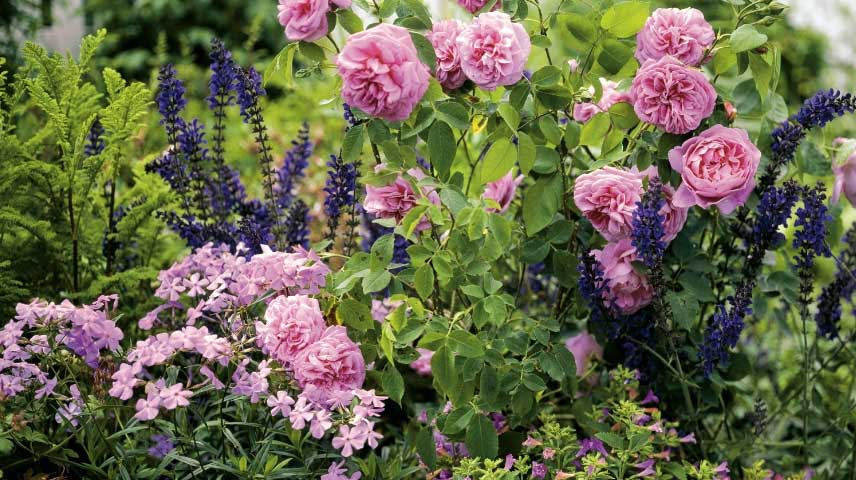
You can integrate roses into a flowerbed with other colourful flowerings! Rose ‘Gertrude Jekyll’, Calamintha grandiflora, Salvia nemorosa, Phlox cardina ‘Bill Baker’ (photo Friedrich Strauss – MAP)
Roses for borders of paths or flower beds
You can use roses to border a path or a flowerbed, or to enhance the base of a wall or a hedge. Opt for varieties with a compact and dense habit, offering abundant flowering. For example, choose the stunning rose ‘The Fairy’, which is covered in soft pink flowers from July to October. This type of low, ground-cover rose is ideal for gently accompanying a pathway, guiding visitors through the garden. You can also choose from the Décorosiers, valued for being very floriferous and robust!
Discover our selection of roses for borders.
Discover other Roses
View all →Available in 0 sizes
Available in 3 sizes
Available in 2 sizes
Available in 3 sizes
Available in 2 sizes
Available in 2 sizes
Available in 2 sizes
Available in 3 sizes
Available in 2 sizes
Roses for pots, on a terrace or balcony
Miniature roses are particularly suited for pot or container cultivation. Small in size, they can easily be placed on a balcony, terrace, or patio. You can admire them and enjoy their fragrance right from your doorstep, without needing to venture to the back of the garden! However, ensure you have a large container to grow them under good conditions. Additionally, these roses will require a bit more watering and fertiliser than if they were planted in the ground.
We recommend varieties such as ‘Sweet Dreams’, with very light orange flowers, or ‘Charmant’, with pink flowers. For more options, feel free to check our selection of roses suitable for pot cultivation.
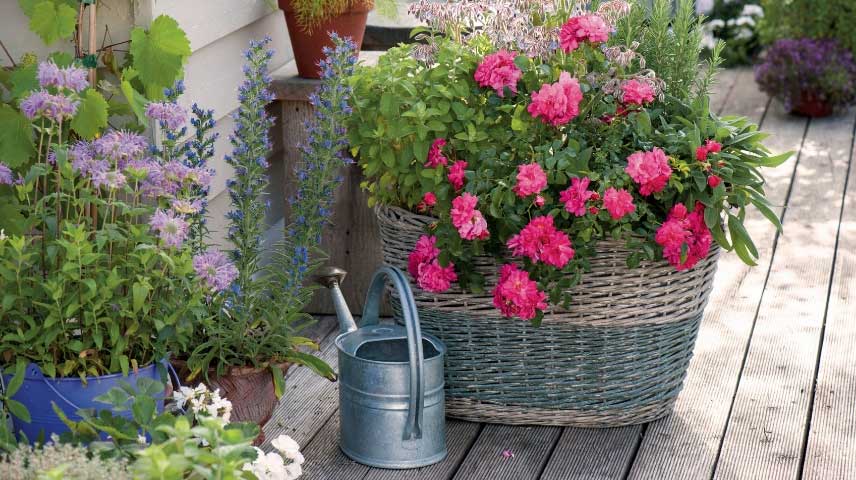
The most compact roses can be grown in pots or containers. Rose ‘Emera’, borage, rosemary, sage, stevia (photo: Friedrich Strauss – Biosphoto)
Roses to adorn a pergola, a wall, or a gazebo
Roses are stunning when used to climb on a support, whether it be a wall, a trellis, an arch, or a pergola. They instantly bring a very romantic atmosphere! Choose climbing roses, or possibly rambling roses (which are more vigorous). Plant them at the base of a support and guide their branches onto it to help the plant cling. You can pair them with other climbers, such as clematis. Among our favourite varieties, we invite you to discover the roses ‘Ghislaine de Féligonde’, ‘Albertine’, ‘Blush Noisette’, and ‘Zephirine Drouhin’.
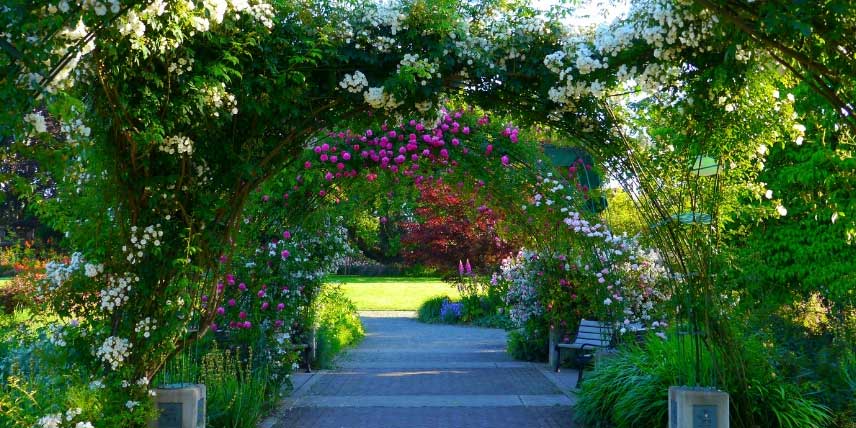
Climbing roses in the Owen Memorial Rose Garden, Oregon. (photo: Rick Obst)
Roses for Slopes
If you want to dress a slope by planting it, opt for ground cover roses. With their spreading habit, they will easily cover it with a profusion of flowers, bringing colour to a part of the garden that may have seemed dull and neglected. Due to the slope, these areas can be tricky to maintain, and placing roses will help limit interventions while adding a very decorative aspect! You might choose, for example, the ground cover rose ‘The Fairy’, or a Décorosier, such as the variety ‘Kadora’.
Our selection of roses for slopes.
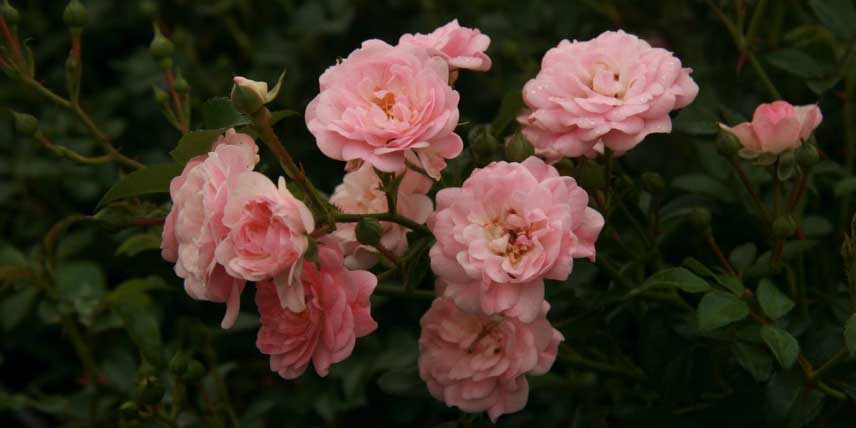
The rose ‘The Fairy’
Roses to liven up a hedge
Due to their large size and rather natural shape, bush roses are perfectly suited for creating a hedge! Moreover, their needles make them effective as a defensive hedge. You can create a rustic-style hedge by opting for botanical roses. They have the advantage of being vigorous, offering single flowers, and having a flexible and natural habit. In this case, combine them with other bushes, both deciduous and evergreen. The diversity of plants used will create a rather wild effect, far from the artificial look of monospecific hedges. Discover our selection of roses for hedges.
Roses for a Romantic Garden
Roses are an essential element of this type of garden, making it difficult to conceive a romantic atmosphere without them! Focus your choice on varieties that offer generous and abundant flowerings, preferably with large, very double flowers (a high number of petals). Opt for soft, rounded shapes, as well as delicate shades. Choose colours such as soft pink, white, and possibly, to add more intensity, red. You will find beautiful varieties with very delicate flowerings among the old roses. Moreover, the majority of them are fragrant!
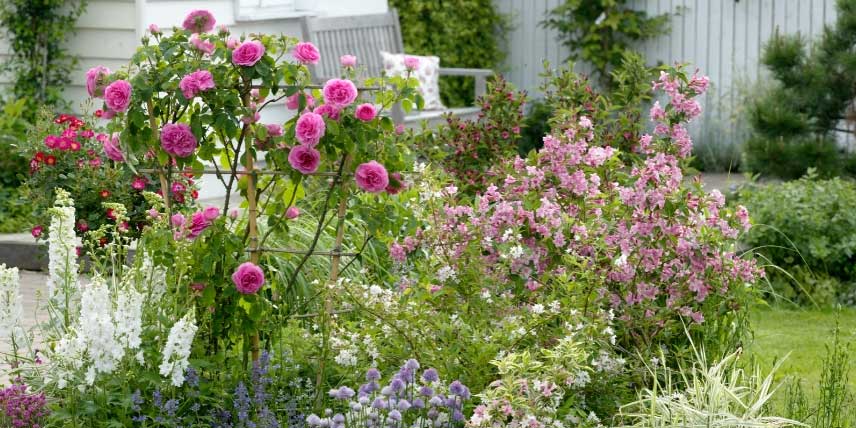
Roses are perfect in romantic gardens, where soft shades dominate: pink, white, mauve… Rose ‘Gertrude Jekyll’, Weigelia florida ‘Nana Variegata’, Deutzia gracilis, Delphiniums (photo: Friedrich Strauss – Biosphoto)
Roses for low-maintenance gardens
For minimal maintenance, choose roses that have been awarded the German ADR label. This label assesses the aesthetic quality of the plant and its flowering, as well as its resistance to diseases and climatic challenges. Roses that have successfully obtained this certification can adapt to various climatic conditions, are more robust, and do not require phytosanitary treatments. They are more resilient plants than others, which means they will need less attention and care afterwards! This is the case, for example, with the ‘Iceberg’ rose, with white flowers, and the ‘Amber Queen’ rose, with orange flowers. For minimal maintenance, also consider planting perennial ground covers at the base of your roses to reduce weeding!
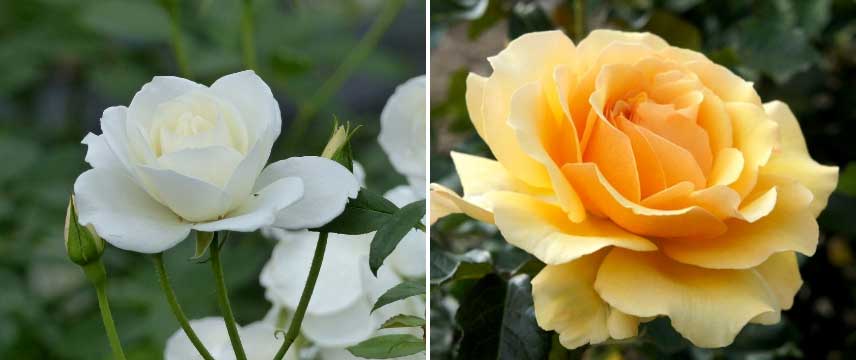
The ‘Iceberg’ and ‘Amber Queen’ roses
Roses for a Scented Garden
Not all roses are equal when it comes to fragrance! Old roses are valued for their scent, while modern roses are often less fragrant. However, some modern varieties, such as ‘Brocéliande’ or ‘Chartreuse de Parme’, offer delightful fragrances. You can also choose English roses, which are also quite aromatic. For example, consider ‘Fragrant Delight’, with pink-orange flowers, or ‘Munstead Wood’, with purple blooms. To create a fragrant border, you can plant your roses alongside lavender, honeysuckle, jasmine (Jasminum officinale), and mock orange (Philadelphus)…
Discover our range of fragrant roses.
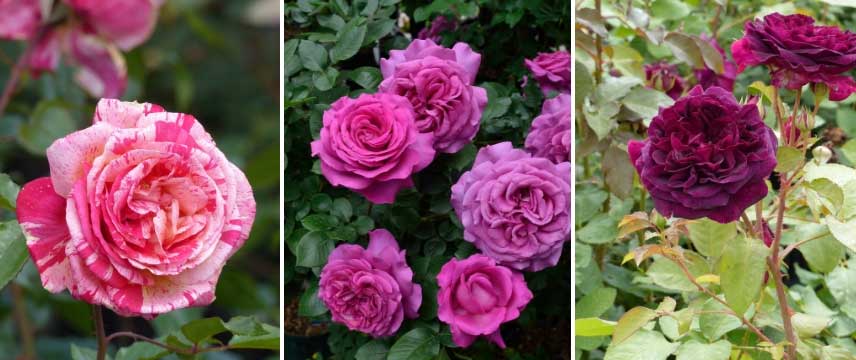
The roses ‘Brocéliande’, ‘Chartreuse de Parme’, and ‘Munstead Wood’
Roses for natural or naturalistic gardens
You can easily integrate roses into a rustic, wild-style garden. We recommend opting for botanical species with single flowers… For example, choose Rosa glauca, with its bluish foliage, or the China rose ‘Mutabilis’, which offers both pink and orange flowers. Due to their simple and natural appearance, rosehip roses are also very interesting for this type of garden. You can also choose double-flowered roses, but favour soft, delicate shades. Avoid overly bright colours or variegated roses. Opt for varieties with a natural and flexible habit (preferably shrub roses), which you can integrate, for example, at the front of a free hedge.
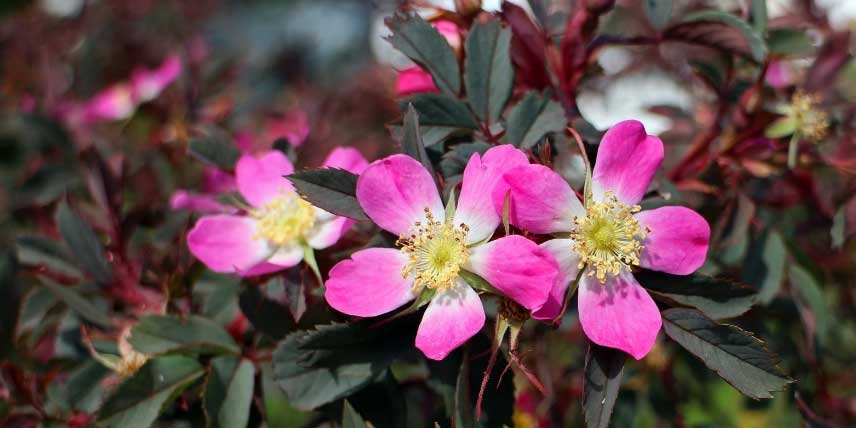
The botanical rose Rosa glauca
Roses for White Gardens
You can create a white garden by incorporating pure white flowering roses, inspiring elegance and purity. For example, choose the variety ‘Iceberg’, a bush rose with clustered flowers. For a more original flowering, opt for the old rose ‘Jacqueline du Pré’, whose flowers consist of white petals arranged around a heart of pink stamens. Finally, if you are looking for a climbing form, discover the variety ‘Madame Alfred Carrière’, with slightly pinkish white flowers. You can plant these roses among gypsophila, yarrow, acidanthera, white agapanthus, and alongside the variegated foliage of hostas and brunneras.
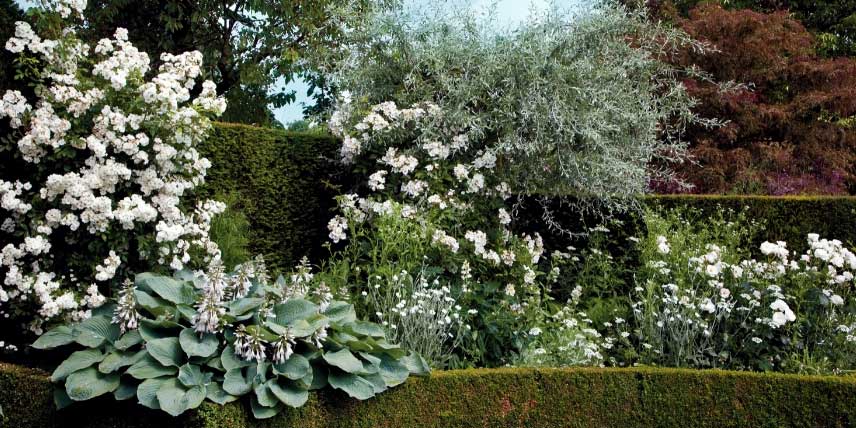
Roses can be integrated into a white garden. Here, the varieties ‘Maria Mathilda’ and ‘Guirlande d’Amour’, with Hosta sieboldiana ‘Elegans’, Pyrus pendula, Buxus, Lychnis coronaria ‘Alba’ (photo: Biosphoto – NouN)
Roses for pink garden
Incorporate roses into a very romantic garden, where the soft shade of pink predominates. Vary the hues, from pale, delicate pink to dark, almost purple pink, by planting Japanese Anemones, Bergenias, Gaura lindheimeri, peonies, echinaceas… For roses, choose a variety like ‘Gertrude Jekyll’. If you prefer a climbing form, for example to place at the back of a flowerbed against a wall, or against an arch, rather cultivate the variety ‘Pierre de Ronsard’. For ground cover, opt for the stunning rose ‘The Fairy’.
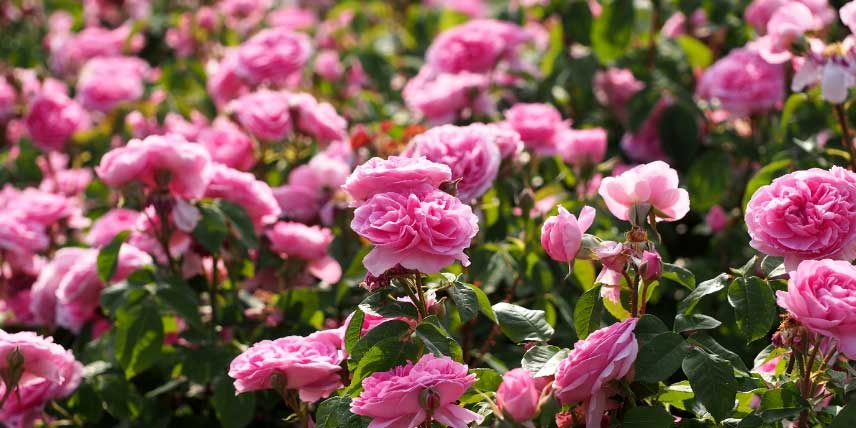
The rose ‘Gertrude Jekyll’
Roses for Colourful Mixed Borders
Roses can easily fit into a colourful flowerbed where a variety of bloom types intertwine. For this, we recommend growing perpetual roses, which flower multiple times throughout the year. With certain varieties, you can enjoy their blooms from May-June until October! This will give you a flowering bed for an extended period. You can choose the old rose ‘Reine des Violettes’, with purple-pink flowers. For a soft pink shade, very romantic, discover the rose ‘La France’. If you desire an intense and original flowering, opt for ‘Black Baccara’, with dark red, almost black flowers.
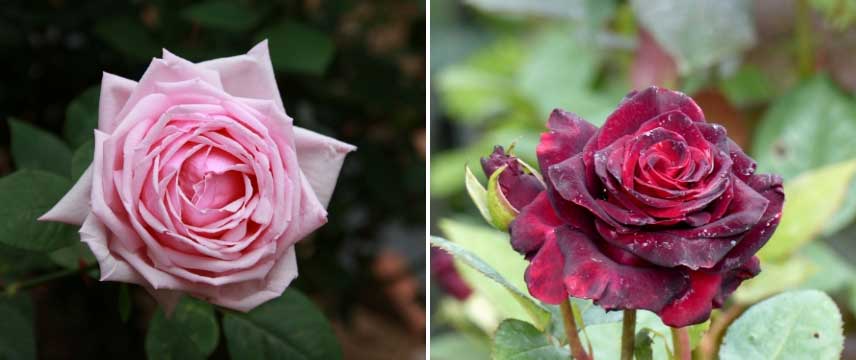
The roses ‘La France’ and ‘Black Baccara’
- Subscribe!
- Contents
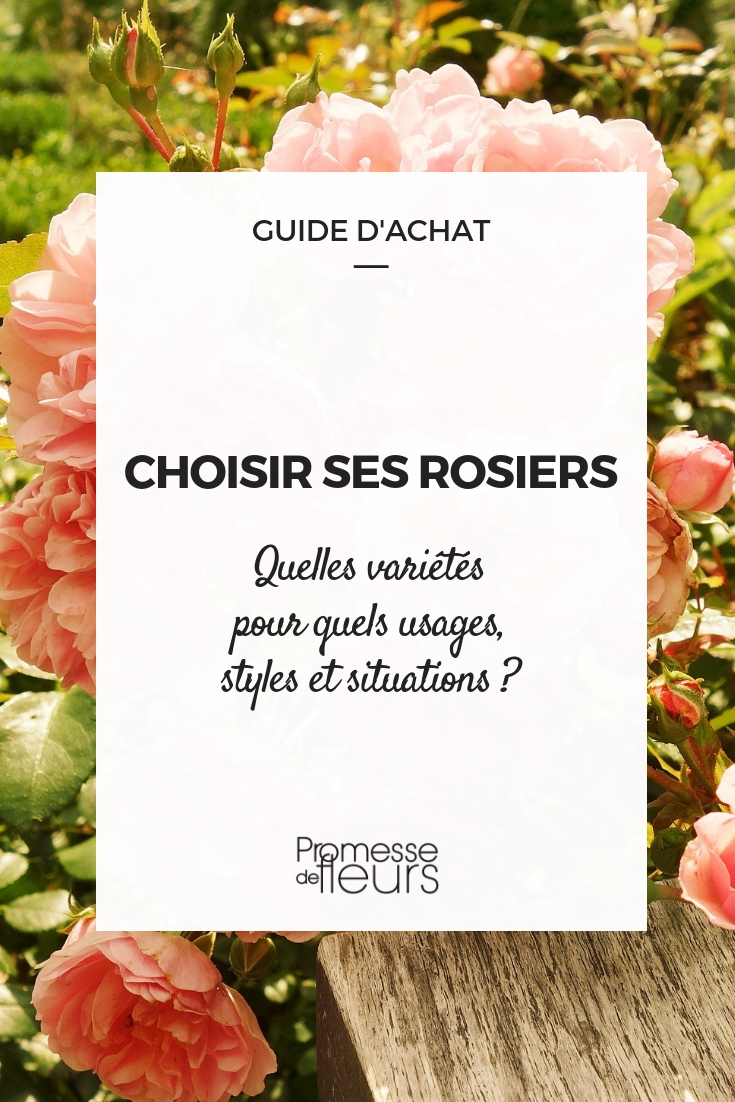































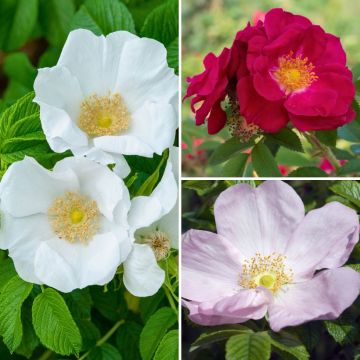
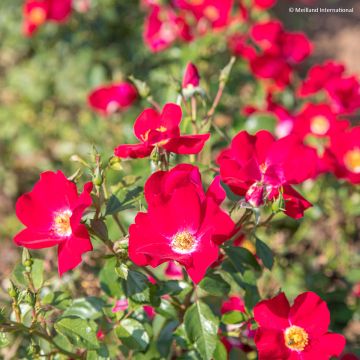
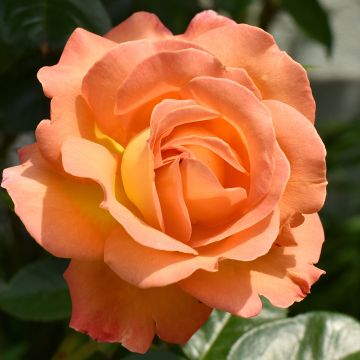
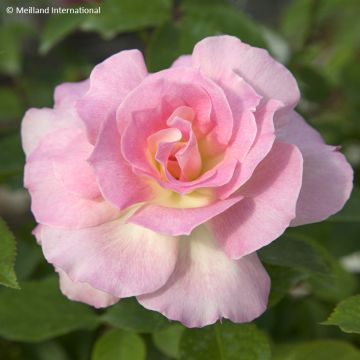


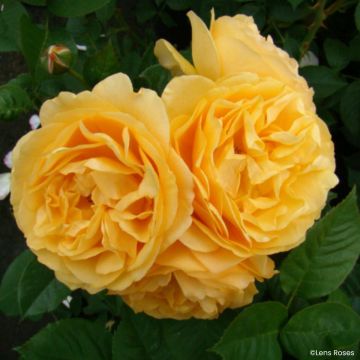
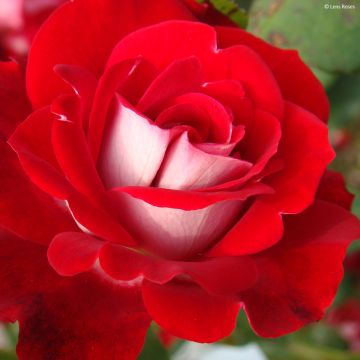
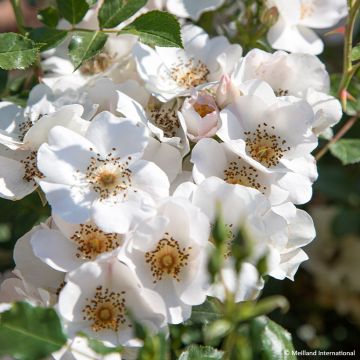

Comments